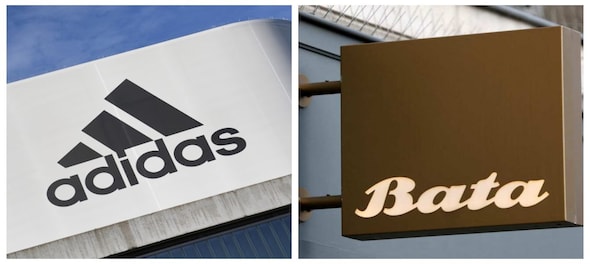
Bata is over a century old footwear company with its own end-to-end eco-system. The brand, manufacturing and retail eco-system are all owned by Bata. All owned, manufactured, sold and branded – Bata.
However, to grow further – at some point, brands need to outsource some of these processes and leverage their assets (brands and retail presence) a little more. Bata's outsourcing process of brand and store expansion began with them…
1.
Tying up with Hush Puppies to premiumize their portfolio
2. Opening stores via the franchise route
In FY22, Bata added over 80 franchise stores. In FY23, it added another 116 franchise stores. Total Franchise count as of June 2023 was at 448, covering 388 Towns. Around 21 percent of total store strength is franchise model as of today. Their vision is to have a total of 500 franchise stores in the near future.
However, post COVID-19, there has been a rising demand for leisure footwear and sneakerisation of the footwear industry. With the average age of consumers reducing, Bata has planned to tap this trend with their new concept Sneaker Studios now implemented in 565 stores out of 2,100. Sneakers are about a fourth of their overall sales, their long-term target is to get 50 percent sales from informal shoes.
Additionally, as per an interview to CNBC-TV18, Managing Director and CEO of Bata Gunjan Shah said they're looking to enter the apparel business to leverage their retail presence.
For me, the important part of this statement wasn't "apparel business" as much as "leverage their retail presence" which basically means, make higher sales from the same store eco-system.
With a brand as strong as Bata – why could they not premiumise, enter other categories or increase sales themselves? It sounds simple, but it's not easy. Chances are that Bata's value perception could be standing in the way of premiumising and youth-focusing their portfolio.
In February 2023, brokerage firm ICICI Securities cut its target from Rs 1700 to Rs 1500. They said the company's Focus on premiumisation, brand perception and distribution are the right steps, but there will be immense challenges.
My experience with learning about brands says – It's impossible for a brand to change its perception upward. Brands cannot premiumise and customers won't accept it easily. Lowering their price point and going down the value chain is easier, but pricing up is not intuitive to customers.
So, if you flip the earlier perspective and think of it as a collaboration and not competition, it appears like a win-win situation for Bata and its customers.
A great way, I've learnt to address this challenge is through collaborations. In the auto, apparel and watch space we've seen that – Hero X Harley, Bajaj X Triumph, Tarun Tahiliani X Aditya Birla fashion, Swatch X Omega. Brands that couldn't premiumise, tied up with those who could offer affordable aspiration.
Here's where the next outsourcing comes – Can they outsource growth and positioning, to other brands?
Bata until now has been selling its own brand while competing with other larger players. So, on the face of it, it may seem absurd to sell a competing brand in your store.
But there are examples in the listed space that have done that. Metro Brands started out selling its own brands and as their retail presence grew, they tied up with brands like Crocs, Fitflop and acquired the rights to sell Fila from Cravatex. Now, Metro Brands get around 30 percent of their sales from third party brands at their stores.
So this likely-deal with another brand means
If Bata succeeds in this, as they have with Hush Puppies, the room opens for multiple other brands looking to enter and grow in India.
Eventually, the way to look at Bata would be – A store that sells Bata and other shoes. The only difference would be, they'd get higher margins on Bata and slightly lower on others. But that shouldn't matter. It may be mildly margin dilutive, but it would be ROCE accretive as the denominator (asset base) remains the same, but numerator increases as the company gets more sales, higher absolute EBITDA from the same store network.
(Edited by : Jerome Anthony)
Check out our in-depth Market Coverage, Business News & get real-time Stock Market Updates on CNBC-TV18. Also, Watch our channels CNBC-TV18, CNBC Awaaz and CNBC Bajar Live on-the-go!


BJP replaces Poonam Mahajan with lawyer Ujjwal Nikam for Mumbai North Central Lok Sabha seat
Apr 27, 2024 7:53 PM
Meet Amritpal Singh, the separatist leader contesting Lok Sabha polls from Punjab's Khadoor Sahib
Apr 27, 2024 7:18 PM

